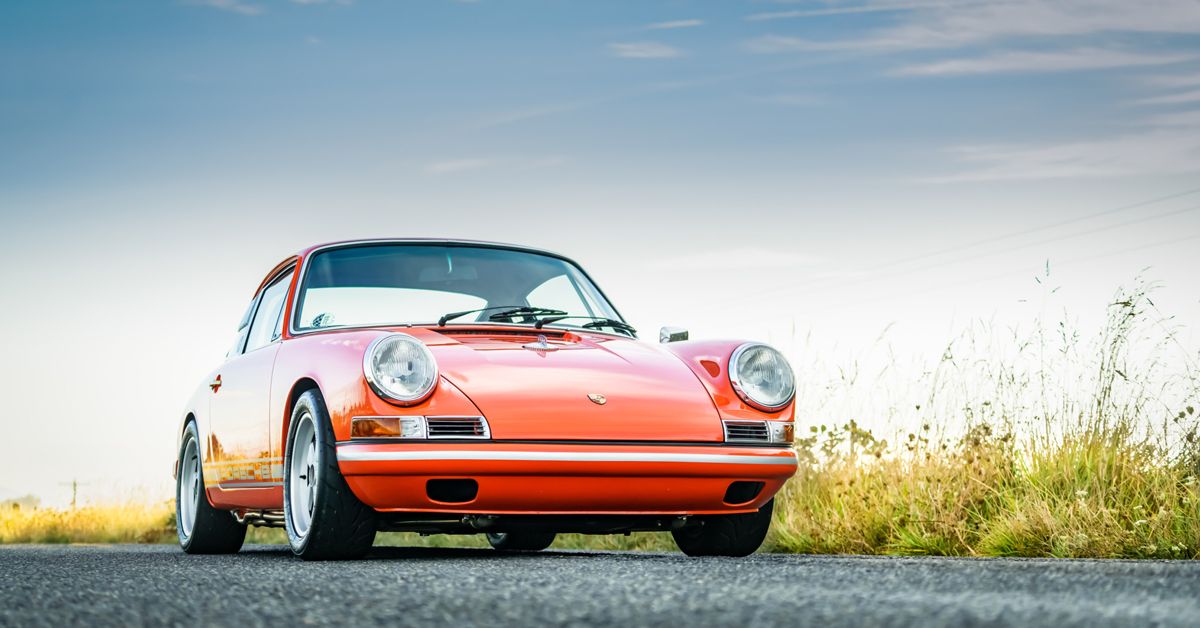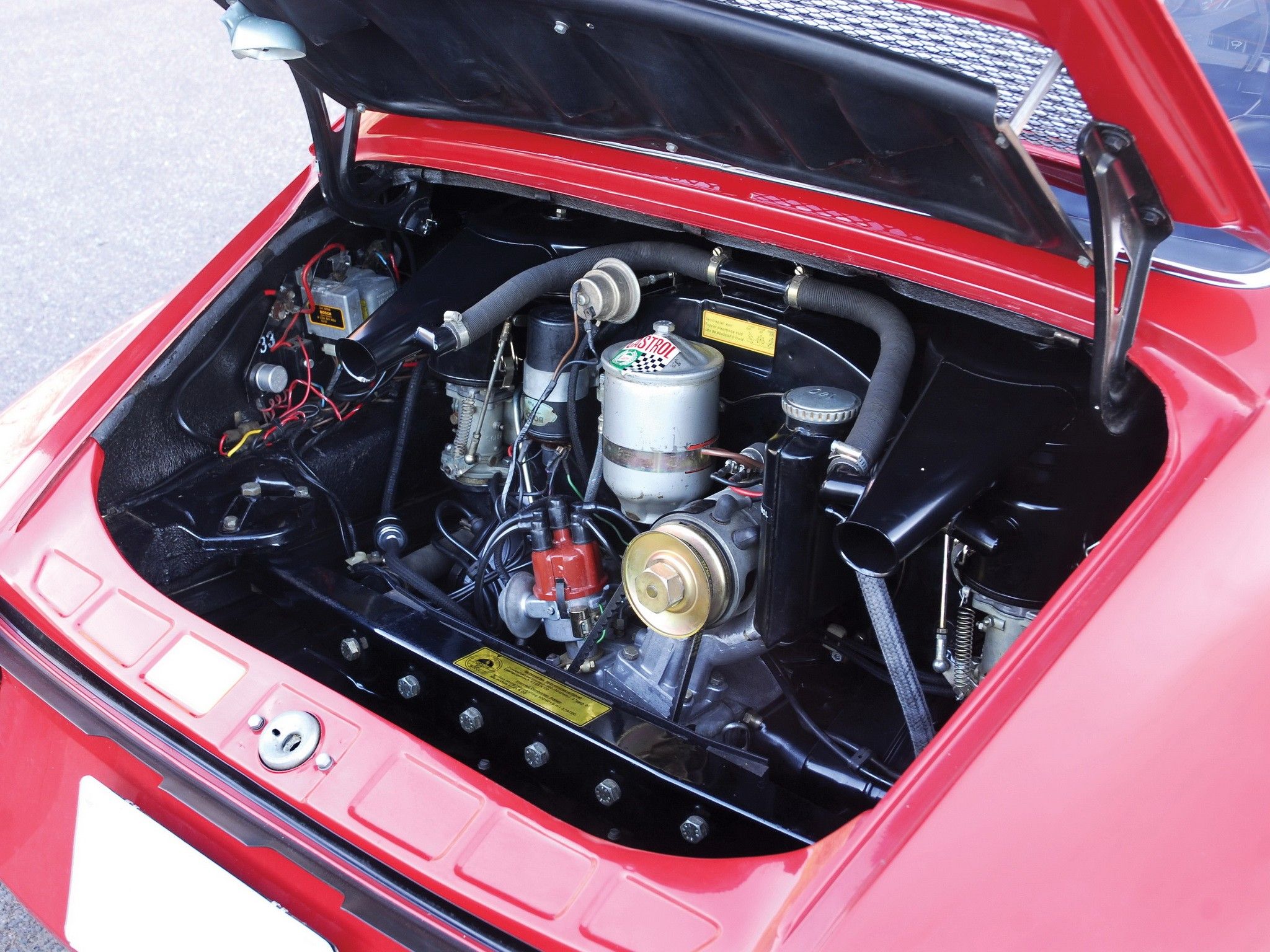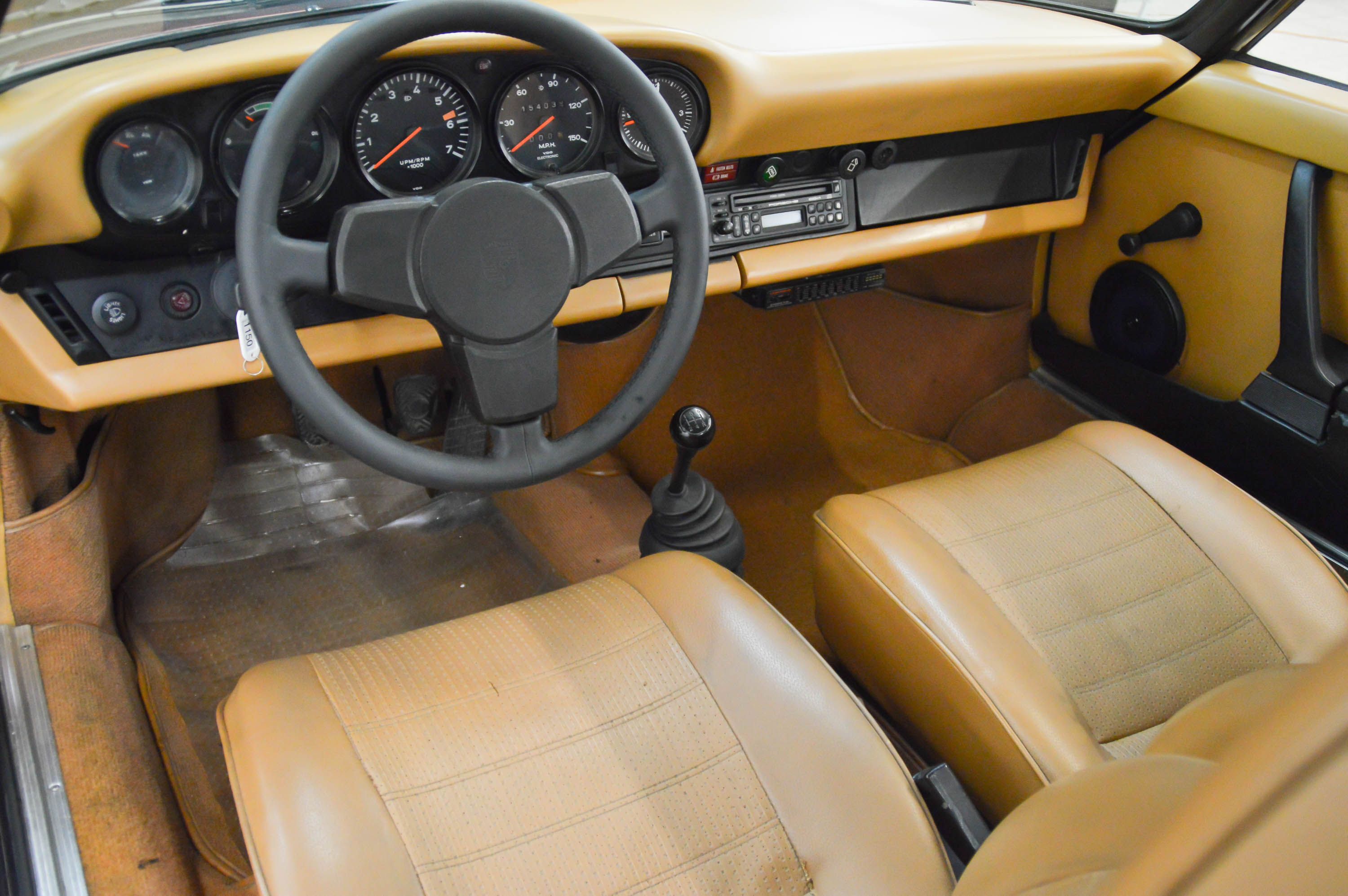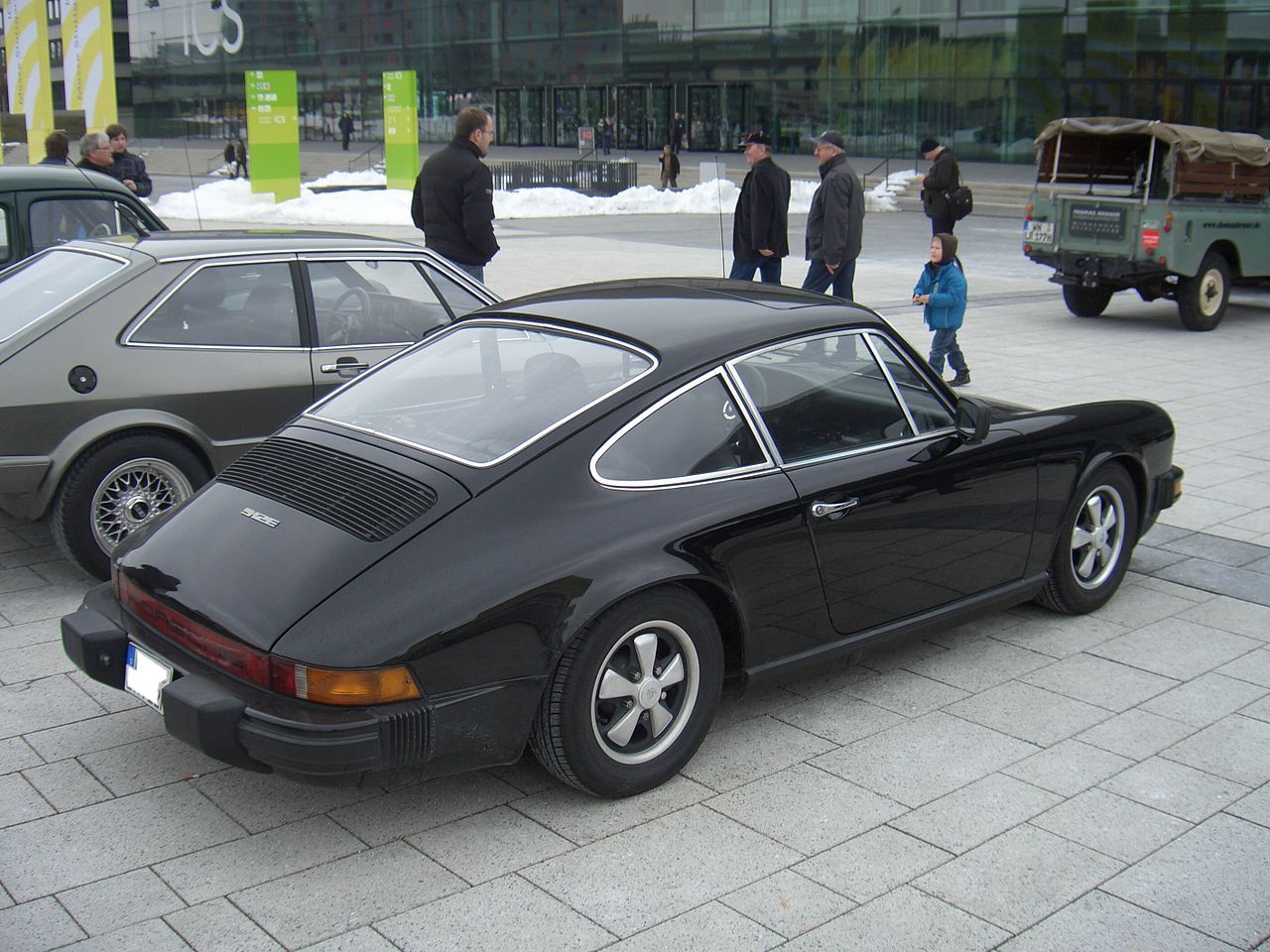The Porsche 912 was an entry-level alternative to the six-cylinder 911 coupe. Produced from 1965 through to 1969, the 912 was less expensive and had significantly less power than the 911 variant. Indeed the 912 was developed to bridge the gap between the outgoing Porsche 356 and the new 911 at the time. The Porsche 911, however, commanded a much higher price which turned traditional Porsche customers away. As a result, the development of an entry-level Porsche eased the transition from 356 to 911.
The 912 had a four-cylinder engine under the hood derived from the Porsche 356, which weighed significantly less than its six-cylinder stablemate. Unlike the 911, a lighter rear end meant the car had less urge to oversteer, making the 912 a better-balanced vehicle. Apart from the engine, the 912 was virtually identical to the 911.
As a result, the 912 proved to be very popular at the time. Without a doubt, the combination of styling, reliability and price presented the 912 as an attractive package to both new and old customers. Therefore, the Porsche 912 enjoyed better sales than the 911 during the early years of its production.
The Porsche 912 was developed alongside the more expensive six-cylinder between 1965-1969, with approximately 32,000 vehicles built. Reportedly, through the year 1967, Porsche sold twice as many 912s than the more powerful 911.
1976 saw the revival of the Porsche 912 name once again, this time as a 912E. The 912E (E for Einspritzung) was produced to fill the gap as an entry-level Porsche after the discontinuation of the 914. Exclusively for the US market, the 912E had the same body as the G-model Porsche 911. Moreover, the Porsche 924 was still in its development stage, so the 912E filled the space in the market, albeit for one year.
The 2.0-liter flat-four engine was derived from the Porsche 914. Reportedly, almost 2100 examples were built during its only year of production.
Engine And Performance Of The Porsche 912
Although the 2,140 lbs Porsche 912 had 40 hp less than the 911, its handling characteristics were well mannered, with direct steering and balance. Furthermore, the 1582cc four-cylinder boxer engine, borrowed from the Porsche 356c, was paired with a four-speed transmission, though a five-speed was available as an option. Mechanically, the four-cylinder unit in the 912 was less complicated than the larger six-cylinder engine.
In terms of model progression, the Porsche 912 had better aerodynamics and suspension setup than the aging 356. With 90 horses under the hood, it could only manage a 0-60 mph time of around 12 seconds. In comparison to the Porsche 911, performance was generous rather than startling with a top speed of 115 mph. Nevertheless, the Porsche 912 was regarded as a better choice for a daily driver with its nimble handling and pure driving experience.
Moreover, unlike its more powerful sibling, the 912 was capable of well over 30 mpg, which attracted customers to the brand. Overall, the Porsche 912 provided a fine balance between the 356 and the 911. In 1969, Porsche extended the wheelbase of both the 911 and 912 models, known as the B-series, improving stability on the tarmac.
The 1976 Porsche 912E, however, did not have the 356 engine due to emission laws in the US. Instead, its powerplant was a four-cylinder, air-cooled engine derived from the outgoing Porsche 914. The 2.0-liter Volkswagen unit, with Bosch L-Jetronic fuel injection, came with a five-speed transmission as standard and produced around 90 hp. Moreover, it had a 0-60 mph time of 13 seconds and an estimated top speed of 110 mph. Porsche incorporated many advancements into the 912E in comparison to the original 912 of 1965.
Interior And Design
The 912 design had the same distinctive shape as its more powerful sibling. What’s more, the car had the same fundamental appeal as the classic Porsche 911. Indeed, the price and styling of the 912 made it possible for many customers to fulfill their dream of owning the sports car marque. The Porsche 912 was available in Coupe and Targa body styles, just like the 911. Moreover, the Targa model was produced between 1966 to 1969, with just over 2,500 units manufactured in total.
Many components in the Porsche 912s sparse cabin were similar to the 911. However, unlike the 911, the dashboard of the earliest 912s accommodated only three-gauge clusters, though five became available a few years into production.
Unlike the previous generation 912, the 912E came equipped with more options as standard, such as air-conditioning, factory sunroof and gorgeous Fuchs alloy wheels. Pretty much the same as what you could expect to find in the equivalent Porsche 911. Based on the G-series 911, the Porsche 912E mirrored the 911 exterior, with only the three numbers on the engine cover, giving away its identity.
The Porsche 912 Is Becoming Rare
Undoubtedly, the maligned 912 has been overlooked by many, regarded as a slow, four-cylinder Porsche. In the automotive world, the 912E was, in some respects, ignored with such a short production life.
As a result, prices of these Stuttgart classics became incredibly cheap in the modern classifieds, with some 911 classic owners even using them as donor cars for parts. However, more Porsche enthusiasts are discovering the minimalist appeal of the 912 and the reason for its existence. Moreover, it appears Porsche 912 prices are escalating at a rapid rate.
According to reports, prices of the early 912s have doubled over the past decade. Moreover, the price difference between a Porsche 912 and the equivalent classic 911 isn’t so vast anymore. According to Classic.com, the average price of a Porsche 912, over the last five years, has been around $46,000. The highest sale was recorded at $165,000.
In comparison, the 912E has an average selling price of $33,000, with the highest being just over $60,000.




